Man of Iron

Brief Synopsis
Cast & Crew
William Mcgann
Barton Maclane
Mary Astor
John Eldredge
Dorothy Peterson
Joseph Crehan
Film Details
Technical Specs

Synopsis
Steel mill foreman Chris Bennett is well-liked by his men. His rapport with them leads to his promotion to general manager over Tanahill, cousin of Balding, the mill's owner. Bitter about the loss of the job, Tanahill and his secretary, Vida, plot to keep Chris away from the workers. With Tanahill's encouragement, Chris spends his time golfing and inspecting his expensive new house. His old friends in the mill feel abandoned. Only Tom Martin is sure that Chris is still on their side. Chris's wife Bessie is also unhappy about the change in their life. She misses her old friends and begs Chris to return to his former job. When Balding takes a vacation, leaving Chris in charge, things completely fall apart at the mill. The men are angry that they must work overtime for no extra money to repair a mistake that Chris failed to catch. After the job is finished, they ask to go back on regular time, but Tanahill pretends that Chris has ordered the new hours to continue indefinitely. The men walk out, but Chris arrives in time to stop them from rioting. Convinced now that Bessie was right, Chris returns to work closely with the men in the mill.

Director
William Mcgann
Cast
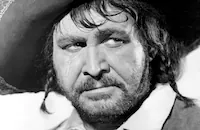
Barton Maclane

Mary Astor
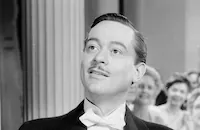
John Eldredge

Dorothy Peterson
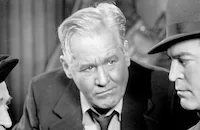
Joseph Crehan

Craig Reynolds

Joseph Sawyer
Joseph King

John Qualen
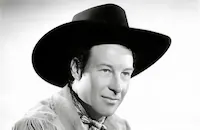
Gordon Elliot
Florence Fair
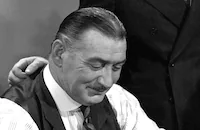
Edward Keane
George Pogue
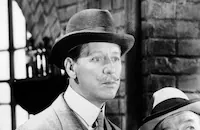
Irving Bacon
Don Downen
Cyril Ring
Fred "snowflake" Toones
George H. Reed
Juel Waldron
Herbert Evans
Tom Manning
Ed Stanley
Mrs. Wilfred North
Milton Kibbee
Eddie Shubert
Nick Copeland
Harry Tenbrook
Budd Fine
Buddy Roosevelt
Marty Faust
Dutch Hendrian
Bert Lindley
George Magull
Sam Appel
Dick Bitgood
Gordon Carveth
Sam Rice
Crew

Film Details
Technical Specs

Articles
Man of Iron
Warner Bros. had just launched a low-budget unit under the supervision of Bryan Foy, one of the "Seven Little Foys" of vaudeville fame. Foy had left the stage for the movies in the 1920s, churning out comedy shorts and inexpensive features (including Warner Bros.'s first all-talking picture Lights of New York, 1928), and earned the name "The Keeper of the Bs" when he was promoted to the head of the B-movie unit at Warner. Man of Iron was one of the first films released under Foy's watch. Production began in September of 1935 under the working title "Country Boy" and it was in theaters by Christmas. Foy didn't have a lot of ambition for these films, but his productions were "fast, boisterous, brassy, and, mercifully, brief," in the words of B-movie historian Don Miller.
Barton MacLane was a busy member of the Warner stock company in the 1930s. Big, burly and energetic, he was a natural for adventure pictures and westerns and played both crooks and cops in Warner gangster films and crime pictures, but he was always in support of studio stars like James Cagney, Edward G. Robinson, and Paul Muni. The B-movie unit gave sturdy players like MacLane opportunities to take leading roles and Man of Iron was the first film to give MacLane top billing. He plays the role as a big-hearted straight shooter with working class manners who forgets his commitment to the workers on the floor when success goes to his head, little realizing that he's being played a fool by his assistant. MacLane went on to co-star in High Sierra (1941), The Maltese Falcon (1941), and the popular Torchy Blaine series (also produced by Foy's unit), and worked steadily until his death in 1969, capping his career with the role that most baby boomers remember him for: the gravel-voiced General Peterson in the sixties TV sitcom I Dream of Jeannie.
Mary Astor is second billed in the credits but has a fairly small role as the receptionist in the head office. Astor referred to the period between The Little Giant (1933), in which she starred opposite Edward G. Robinson, and the Oscar®-nominated Dodsworth (1936) as "those eighteen pictures." All of the films were made under a new contract to Warner in which she toiled as a feature player. Though she had done well during the silent era, her parents had spent much of her earnings (she was a minor for the first few years of her film career) and the stock market wiped out much of what was left. "I had been offered starring contracts, more money, fewer pictures, less work--but I was afraid of starring," she wrote in her candid autobiography My Life on Film. "It sounds paranoid, but I was practical. Because starring was one hell of a gamble, and I couldn't afford to gamble." So after the success of Red Dust (1932), she took supporting roles as assigned, making eighteen films in a whirlwind over four years before her career regained its footing with Dodsworth. To Astor, Man of Iron was just another assignment, but ever the professional, she brought a brightness to every scene she was in.
There is one more face in the crowd instantly familiar to fans of classic movies. In the role of Collins, the boiler mechanic who tries to warn Chris of the failing machinery, is John Qualen. A regular member of the John Ford stock company, he has unforgettable scenes in His Girl Friday (1940), as the mousy condemned man Earl Williams, and The Grapes of Wrath (1940), as the farmer who watches helplessly as bulldozers level his repossessed home, and co-starred as immigrant settler Lars Jorgensen in The Searchers (1956), leaning on a Swedish accent that featured prominently in many of his screen appearances. Man of Iron came early in his career but already he was a busy character actor: it was one of a dozen screen credits he had in 1935.
Directed by B-movie helmer William McGann, an English import who began his career as a silent movie cinematographer, the film was largely dismissed by critics but the New York Times singled out MacLane's star turn: "Though he is no matinee idol, Mr. MacLane reveals a two-fisted personality that should delight masculine audiences."
By Sean Axmaker
Sources:
A Life on Film, Mary Astor. Delacorte Press, 1967.
B Movies, Don Miller. Ballantine Books, 1973.
"Man of Iron" review, T.M.P. New York Times, December 7, 1935.
IMDb

Man of Iron
Quotes
Trivia
Notes
The film's working title was Country Boy.















